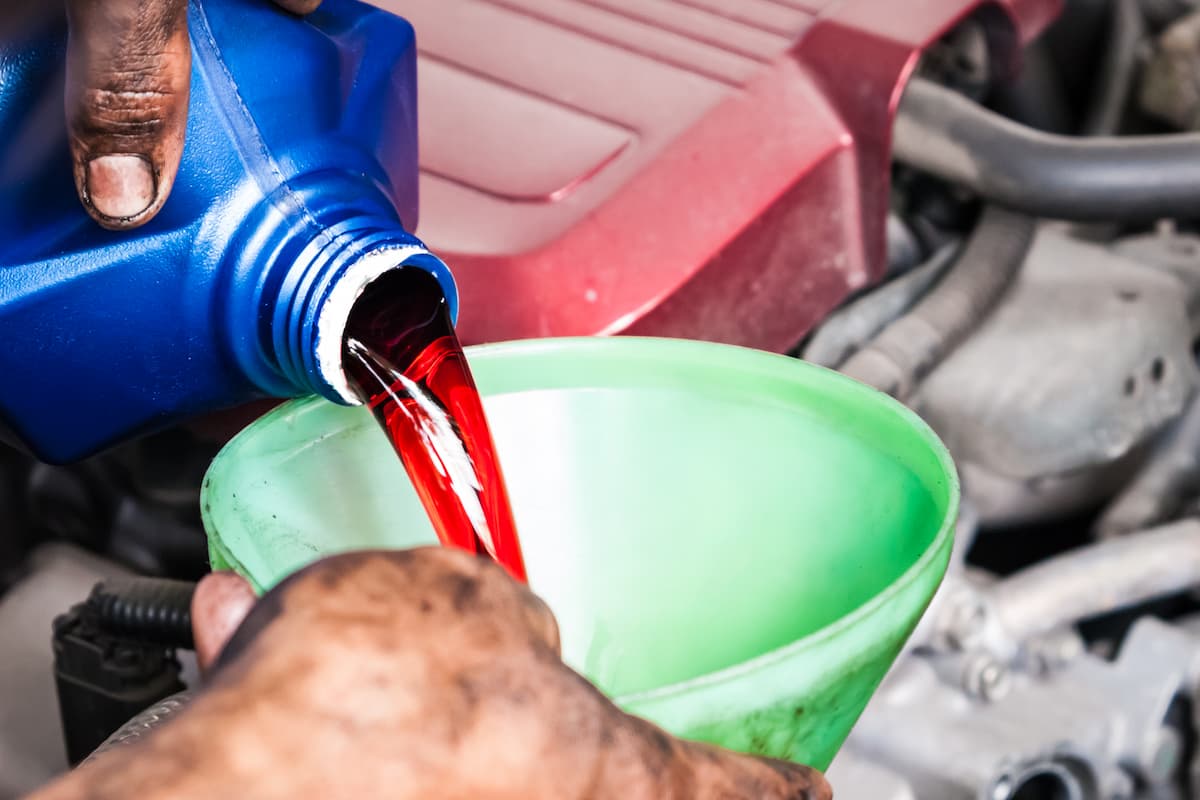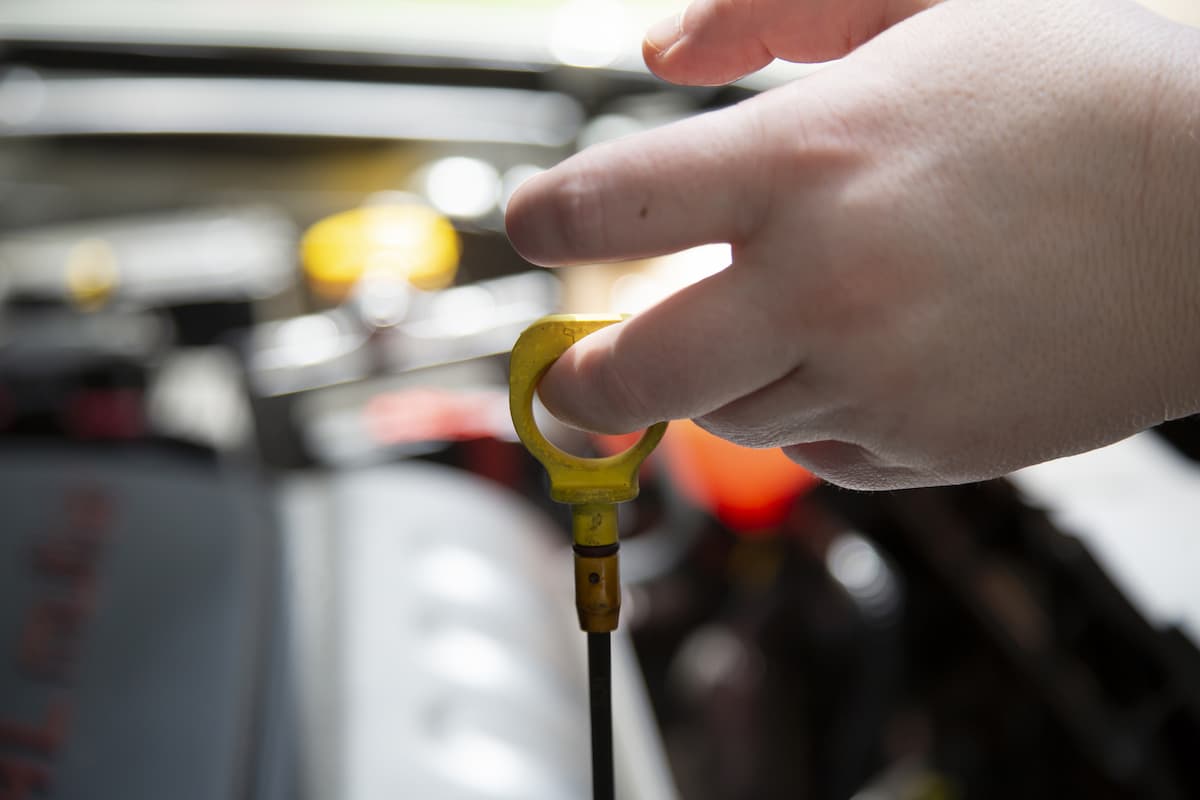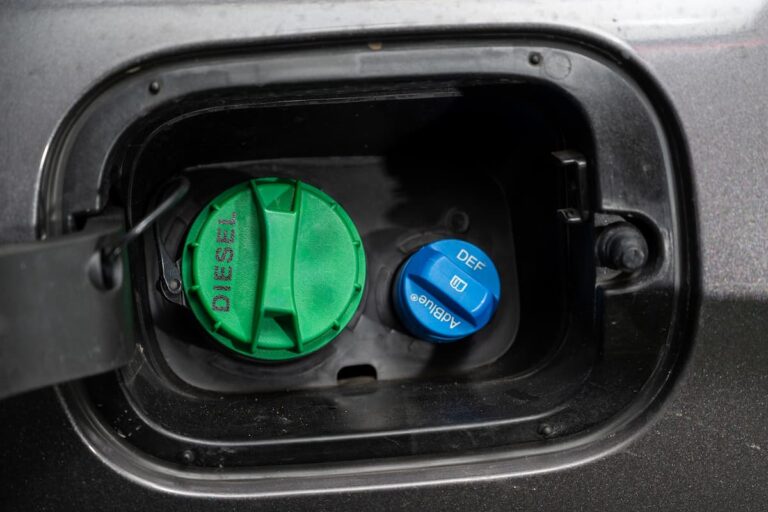Should A Car Be Running When Adding Transmission Fluid?
Cars are complex machines that require considerable maintenance over their lifetimes.
One of the most common things you’ll need to do is refill fluids in different systems, such as your transmission.
A well-lubricated transmission is essential to the overall functioning of your vehicle. Monitoring the levels of your transmission fluid will help keep this system intact.
If your fluid levels are low, you’ll have to add more.
When you add transmission fluid to your vehicle, it should be running. When a car is on, transmission fluid heats up and expands. You want the fluid to be warm when you measure it so you can accurately read its levels and ensure you don’t overfill the car.
How To Refill Your Car’s Transmission Fluid and Why It Matters

Transmission fluid is vital to keeping your car running smoothly. It lubricates your vehicle’s gearbox, allowing you to shift smoothly between gears and enabling the gears to turn without friction.
Failing to have sufficient transmission fluid in your car can lead to transmission failure, damage, and poor performance.
You want the car to be running whenever you refill your transmission fluid. Starting the vehicle and letting it idle allows the engine to heat the fluid in your transmission.
All fluids expand when heated, meaning any time you turn the car on, the fluid in the transmission expands.
If you fill the transmission while the car is off, you can add too much fluid. Once you start it, the natural expansion of the fluid can cause it to run over because it’s too full.
Overfilling your transmission can jam it or damage it.
Steps For Adding Transmission Fluid
Before doing any vehicle maintenance, the first step is to always check your car’s owner’s manual for the proper instructions.
In this case, you’re confirming what type of transmission fluid to purchase so you don’t risk damaging your car.
Once you’ve purchased the correct fluid, you can start adding it to the car.
Generally, you want to let your car run for 1 to 3 minutes to warm up the engine. You can go longer if it’s cold outside or shorter if it’s extremely hot.
You can leave the car idling once it’s warmed up, but make sure to put your car in Park and engage the parking brake for safety.
Pop the hood and locate the dipstick for your transmission. Pull the dipstick out, wipe it off, and put it back into the hole.
Pull the dipstick out again to check the level of your transmission fluid. There should be small holes on the stick, and you want the fluid level to be between those holes.
If your car needs fluid, place a funnel into the dipstick hole. Some vehicles need longer funnels than others, so make sure yours reaches far enough.
Slowly pour transmission fluid into the funnel. How much you need depends on how much fluid is in the car to begin with and whether you’re adding or replacing it.
If you’re just topping it off, a half to a full quart (0.5-1L) of fluid is all you need.
You’ll probably need between four and five quarts (4-5L) if you’re removing the fluid to replace the filter.
If you’re totally replacing the transmission fluid, you’ll likely use nine to thirteen quarts (9L-13L), depending on your vehicle.
Once you add the fluid, you’ll want to measure the levels again to ensure you have added enough.
First, sit in your vehicle and hold down on the brake. Move the stick shift through the gears to help circulate the fluid and ensure you get the right measurement.
Next, use the dipstick to check the fluid levels again. You may need to add a little more, but usually only a pint or so.
If the fluid level is correct, you can replace the dipstick. Make sure it’s securely in the hole and seated properly.
You can also check the fluid level with the dipstick throughout the filling process to ensure you aren’t overdoing it.
Generally, you need to add transmission fluid every 30,000 to 60,000 miles (48,000 to 96,000 km). If you don’t drive much, still be sure to check the fluid levels yearly and add as needed.
Can You Add Transmission Fluid Yourself?
You can add transmission fluid on your own – it isn’t difficult and can be done at home.
If you need to replace a filter, it gets a little more complicated, but it’s still one of the easiest maintenance processes for your car.
If you aren’t comfortable replacing the transmission fluid yourself or your car has a tamper-proof transmission, have a mechanic check your levels whenever you get the vehicle serviced.
How To Know When To Add Transmission Fluid

Aside from remembering how many miles you’ve driven since last adding transmission fluid, there are a few ways to know when you should add some.
The biggest indicator is that you’ll get a warning light on your dashboard.
The vehicle should monitor its fluid levels and indicate whenever you need to add transmission fluid or change the oil.
You’ll also know you need to replace your fluid when you smell burning from your vehicle or have difficulty shifting gears.
If the overall performance of your vehicle is slightly but noticeably worse when accelerating or shifting, you should check your transmission fluid levels.
Conclusion
You should always leave the car running when you add transmission fluid.
When your vehicle is off, transmission fluid contracts and sits at the bottom of the pan. When you then go to measure the levels, you won’t get an accurate reading.
More importantly, if you add fluid to a cold transmission, you risk overfilling and damaging it.
To check your transmission fluid, start your car, let it run for 2-3 minutes, then pop the hood and pull out the dipstick in the engine. If your levels are low, add more fluid using a funnel.
To keep your transmission in good shape, check your fluid levels regularly and know that you’ll likely need to add fluid every 30,000-60,000 miles (48,000-96,000 km).






